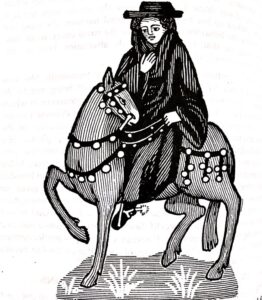What is a Sonnet?
A sonnet is a poetic form that consists of 14 lines of verse that follow a set rhyme scheme and metrical pattern.
The term “sonnet” originates from the Italian word “sonetto,” which is derived from “suono,” meaning “a sound.”
Sonnets are traditionally written in iambic pentameter, meaning each line has 10 syllables with every other syllable stressed.

What Are the 4 Four Main Types of Sonnets?
There are four major types of sonnets:
- Petrarchan
- Shakespearean
- Spenserian
- Miltonic
What Is a Petrarchan Sonnet?
The Petrarchan sonnet is named after the 14th-century Italian poet Francesco Petrarch, known for his lyrical poetry. However, the structure is not Petrarch’s creation but is attributed to Giacomo da Lentini, who wrote in the Sicilian literary dialect during the 13th century. This sonnet consists of 14 lines divided into two parts: an octave and a sestet. The octave uses the rhyme scheme ABBA ABBA, while the sestet employs either CDE CDE (commonly used) or CDC CDC.
What Is a Shakespearean Sonnet?
The Shakespearean sonnet is an adaptation of the Italian sonnet tradition, which emerged in England during the Elizabethan era. Also known as English or Elizabethan sonnets, these poems are structured into 14 lines divided into three quatrains and a couplet. Each line typically follows iambic pentameter with ten syllables. The rhyme scheme for this form is ABAB CDCD EFEF GG.
What Is a Spenserian Sonnet?
The Spenserian sonnet, a variation of the Shakespearean form, features a more intricate rhyme pattern: ABAB BCBC CDCD EE.
What Is a Miltonic Sonnet?
Miltonic sonnets build upon the Shakespearean tradition, often focusing on introspective themes rather than external subjects. They may also deviate from conventional rhyme or length, reflecting the poet’s creative flexibility.
#What is a Sonnet? #What is a Sonnet? #What is a Sonnet? #What is a Sonnet? #What is a Sonnet? #What is a Sonnet? #What is a Sonnet? #What is a Sonnet?
UNIVERSITY QUESTIONS
1: Explain the structure, origins, and characteristics of the four main types of sonnets: Petrarchan, Shakespearean, Spenserian, and Miltonic. Discuss their rhyme schemes, thematic focuses, and metrical patterns, with special emphasis on how each form evolved from the Italian sonnet tradition and adapted to suit English literary practices.
2: Discuss the four primary types of sonnets—Petrarchan, Shakespearean, Spenserian, and Miltonic—highlighting their structural differences and rhyme schemes. Explain the origins of each form, emphasizing how the Italian tradition influenced their development and how poets like Shakespeare, Spenser, and Milton adapted these forms to reflect their creative themes.
3: Describe the distinctive features of Petrarchan, Shakespearean, Spenserian, and Miltonic sonnets. Explain how each type structures its 14 lines, follows a specific rhyme scheme, and employs iambic pentameter. Additionally, discuss how each form reflects the historical and cultural shifts from Italian to English poetic traditions.
4: Analyze the evolution of the sonnet form from its Italian origins to its English adaptations. Provide an overview of the four main types of sonnets—Petrarchan, Shakespearean, Spenserian, and Miltonic—focusing on their structural patterns, rhyme schemes, and thematic concerns. How do these forms reflect the poets’ creative approaches to the sonnet?
5. Trace the development of the sonnet form by examining the four main types—Petrarchan, Shakespearean, Spenserian, and Miltonic. Discuss their origins, rhyme schemes, and thematic distinctions. How do the structural innovations introduced by poets like Shakespeare and Milton shape the sonnet’s expressive potential within English literature?
Read More
Character Sketch of The Squire
Plot Construction in Pride and Prejudice
Introduction to Fiction and Non Fiction
Of Death — Francis Bacon (Text)
Of Truth Critical Analysis by Sir Francis Bacon
Of Truth by Francis Bacon Summary






